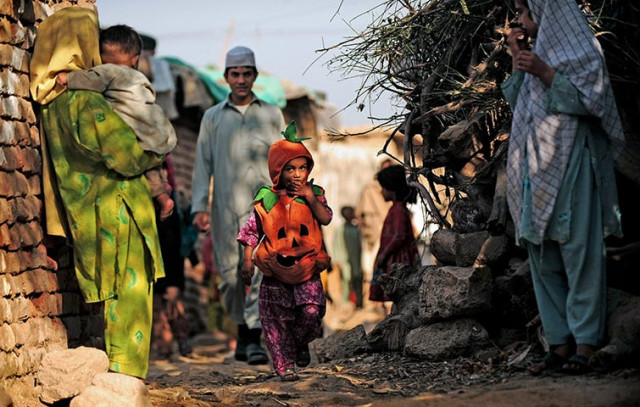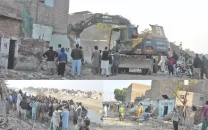How to house the urban poor
One major challenge that govt constantly faces is to provide housing, and land tenure to the migrating communities.

While the situation is now quite dire, there are policy options available to provide affordable and viable housing options for low-income communities. PHOTO: AFP
Karachi has witnessed massive waves of migrations - a trend that continues to date. While this has given rise to a number of social, environmental and development challenges, one major challenge that the government has constantly faced has been in providing housing, land tenure and services to these migrating communities.
There was a failure to tackle this issue or realise the gravity and extent of its resulting implications that extended beyond the realm of the marginalised migrant communities and their abodes. These compound failures led to the establishment of squatter settlements in huge numbers. A comparative analysis of the 1981 and 1998 housing census conducted by Arif Hasan for his work, 'Participatory Development, 2010', shows that 30,000 units per year were constructed against a demand of about 50,000 housing units per year.

The demand-supply gap was accommodated in katchi abadis which have grown at twice the rate of the planned areas. In 1998, 50 per cent of the population, or 700,152 households, lived in katchi abadis. This population has now increased to 61 per cent or 1.2 million households.
Responsibility
The agency that had the most significant mandate and role in providing housing was the Karachi Development Authority (KDA). The authority was responsible for the planning and development of Karachi. Its mandate included preparing a master plan for the 'Karachi Metropolitan Area', implementing programmes for the resettlement of displaced refugees (refugees from India), planning and developing the formal land and housing sector, providing necessary infrastructure to the developed settlements, creating and operating instruments for the disposal of land through lease agreements and exercising building control over land within its jurisdiction.

Most experts agree that the main reason for the KDA's lack of success in providing housing and settlement options had to do with its failure to generate sufficient revenues from land sales. Lack of serviced plots inhibited attempts to make available adequate land for residential development. The lack of serviced plots was largely due to the low pricing of residential plots. Since the KDA had to self-finance land development, the underpricing of plots resulted in the non-availability of sufficient funds for development of associated infrastructure.
Dr D Dowall in his study, Karachi Land and Housing (1989), highlights some of the key aspects that resulted in the growth of the informal housing sector at the expense of the formal sector and the resultant spread of the city towards the metropolitan fringe and into the rural hinterland. He documents that by 1985, katchi abadis accounted for 40 per cent of all residential land area. Between the years 1974 and 1985, the KDA could develop only 28 per cent of the plots it had planned. There was limited development in the heart of the city that was better serviced. Most of the urban development taking place between 1970 and 1985 occurred on the periphery of Karachi and 55,715 acres of rural land were converted to urban use.
The solution
While the situation is now quite dire, there are policy options available to provide affordable and viable housing options for low-income communities. Urban sprawl has to be stopped and options considered for developing housing schemes (vertical growth) in the inner city for which significant parcels of government land exist. Such housing can be linked with proposed public transit schemes such as the Karachi Circular Railway. Quick occupation of the bought housing has to be ensured with non-occupancy charges implemented to prevent speculative buying. A critical requirement is the availability of financing facilities for providing housing loans on low markups. Such measures would help in preventing the unsustainable urban sprawl, provide affordable housing options to low income communities with viable commute options to places of employment and social movement and facilitate development of a more compact city.
Farhan Anwar is an urban planner and runs a non-profit organization based in Karachi city focusing on urban sustainability issues
Published in The Express Tribune, January 12th, 2015.



















COMMENTS
Comments are moderated and generally will be posted if they are on-topic and not abusive.
For more information, please see our Comments FAQ